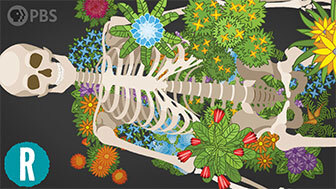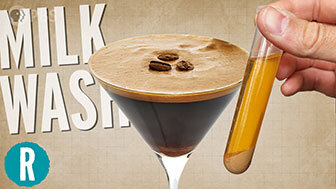Chemists have found potential drugs and other really useful compounds in some truly bizarre places in nature, and who would have ever thought that blood from the Komodo dragon could have a secret inside of it that could possibly save your life. But it doesn't end there, so we're taking a closer look at other wild places in nature that we've found fantastic drugs! Special Thanks to Schoolyard Films for giving us the awesome Horseshoe Crab Blood milking footage. See their in depth video on horseshoe crabs here: Horseshoe Crabs: Prehistoric Paramedics | Schoolyard Films.
SOURCES:
- Antibacterial resistance - Antibiotic Resistance Questions and Answers
- Komodo Dragon’s Blood - Antimicrobial substances identified in Komodo dragon blood
- Biofilms - Biofilms: Microbial Life on Surfaces
- & The role of bacterial biofilms in chronic infections
- Antimicrobials in Komodo Dragon blood - Discovery of Novel Antimicrobial Peptides from Varanus komodoensis (Komodo Dragon) by Large-Scale Analyses and De-Novo-Assisted Sequencing Using Electron-Transfer Dissociation
- Mass Spectrometry
- VK25 inspires the DRGN-1 peptide - Komodo dragon-inspired synthetic peptide DRGN-1 promotes wound-healing of a mixed-biofilm infected wound
- DRGN-1 Kills biofilms - Antimicrobial properties of peptides derived from reptiles
- MRSA is getting crazy - Pig-related infections spread in Denmark, may be in U.S. too
- Dendrilla Membrosa - Chemical and Ecological Studies of the Antarctic Sponge Dendrilla membranosa
- Darwinolide Story - An Antarctic sponge offers new hope against deadly MRSA infection
- Darwinolide - Darwinolide, a New Diterpene Scaffold That Inhibits Methicillin-Resistant Staphylococcus aureus Biofilm from the Antarctic Sponge Dendrilla membranosa
- Horseshoe crabs “over 300 million years old” - Horseshoe Crab
- 3-15% die, based on interviews with biologists -
Krulwich Wonders: What The Vampire Said To The Horseshoe Crab: 'Your Blood Is Blue?' - Evolutionary info on horseshoe crabs -
In Depth Exploration of the Hemolymph of Limulus polyphemus via Combinatorial Peptide Ligand Libraries - The original 1956 paper by Frederick Bang that got everything going -
A BACTERIAL DISEASE OF LIMULUS POLYPHEMUS - How Blue Blood coagulates around endotoxins -
Biochemical principle of Limulus test for detecting bacterial endotoxins - Crab Bleeding - The Blood of the Crab
- LAL v TAL
FDA and USP can help promote horseshoe crab conservation - Hemocyanin - Hemocyanins and Invertebrate Evolution









